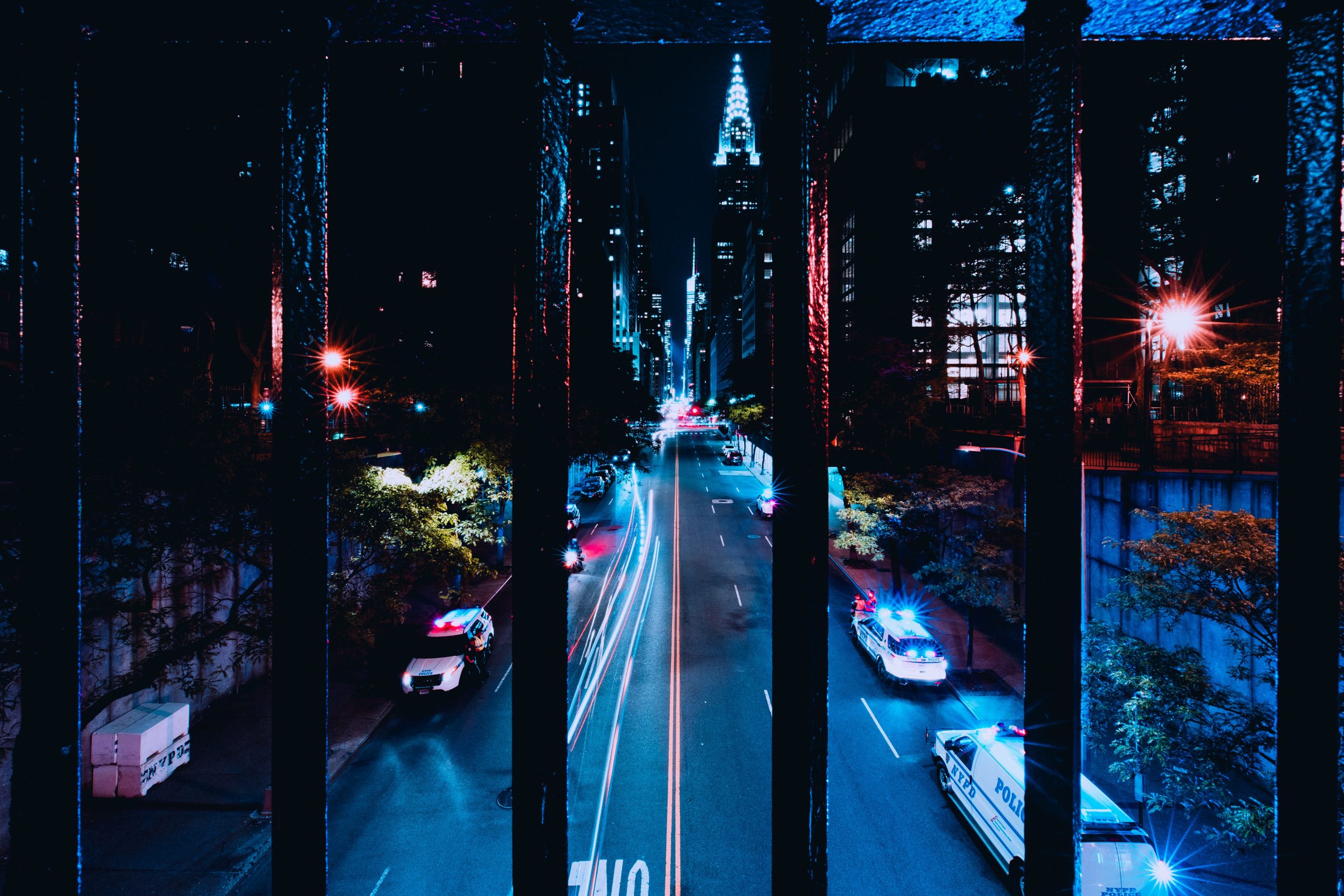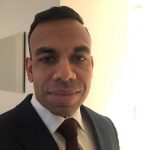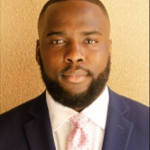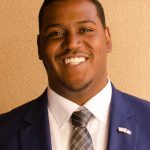Public defenders arguing before the U.S. Supreme Court do not often find a receptive audience. But this week, a legal brief filed by a coalition of defenders from across New York state was referenced by name during the oral argument in New York State Rifle & Pistol Association v. Bruen, a major Second Amendment case that seeks to expand the right to own a firearm for self-defense purposes outside the home.
The public defenders’ brief, which garnered national attention and some criticism when it was filed in July, makes the point that New York’s licensing regime for firearms is so burdensome and unequally accessible that the right to keep and bear arms is “a legal fiction” for these lawyers’ clients. Because the police department exercises broad discretion when it comes to permits under this regime, many of these would-be gun owners can’t get licensed — and are then criminalized for gun possession, subjecting them to all of the many harms of the criminal legal system.
Race is central to these problems. “[V]irtually all our clients whom New York prosecutes for exercising their Second Amendment right are Black or Hispanic,” the brief argues. “And that is no accident. New York enacted its firearm licensing requirements to criminalize gun ownership by racial and ethnic minorities. That remains the effect of its enforcement by police and prosecutors today.” These harms were not lost on the lead attorney challenging the gun restrictions in Bruen, Paul Clement. “The discretion here has real-world costs,” he told the justices this week. “Look at the amicus brief in our support by the Bronx public defenders and other public defenders. The cost of this kind of discretion is that people are charged with violent crimes even though they have no prior record just because they are trying to exercise their constitutional right to self-defense.”
Ahead of this week’s oral argument, Inquest spoke with members of the team behind the public defenders’ amicus brief, Avinash Samarth, Michael Thomas, and Christopher Smith. Their perspectives, as shared with Premal Dharia over a series of exchanges via Zoom and email, have been edited and condensed for clarity.
Michael: This effort within The Bronx Defenders really took off because our colleague Christopher Smith had gone down to Texas, and observed firsthand just how just commonplace it was for folks to have weapons, to have guns, and for no one to bat an eyelash. His experience directly contrasted with our experience as public defenders in New York City, where we are seeing people engage in the exact same conduct and end up on Rikers Island. These are our mostly Black and brown clients who get wrapped up in the system — sent to Rikers, sent upstate, sent to prison over something that somewhere else, nothing would happen.
Chris: Texas was really surprising to me. The culture is so different. That is when I really saw that this particular right exists in two different worlds in our country.

Avi: Our involvement in the case before the Supreme Court is as amicus. We’re providing a different perspective — a richer perspective — on the issues that are before the court: What does the Second Amendment mean? How do licensing requirements burden whatever the Second Amendment means? And how does the licensing requirement in New York City or in New York state play out in the way law actually is practiced in courtrooms around our city?
Chris: Our clients, virtually all of them Black and brown New Yorkers, face life-altering consequences for gun possession. It is very evident that the state’s licensing scheme first strictly limits our clients’ ability to legally own a gun and then allows enforcement actions against them by the police. We can look back at the history of gun laws in the United States and in New York, which is deeply intertwined with our country’s history of systemic racism. If we want to have any hope of creating a system we can all believe in, we need to stop being afraid of having tough conversations. We need to examine this history closely, and honestly, if we are going to have any chance at dismantling the systemic and institutional racism in this country.
Avi: What we’re trying to do here is not limited to a Supreme Court case. We’re trying to push a conversation that has not really developed at all in New York about whether or not different ways of thinking about the criminal legal system should also apply to gun possession. Here, that conversation is kryptonite — no one wants to have it. And a lot of the people who support criminal law reform in New York have never really squarely addressed what to do with people possessing firearms for self-defense. But that’s a huge part of New York’s criminal legal system. Over a quarter of my felony caseload as a public defender consists of people possessing — not using, just possessing — a firearm without a license. It’s also a disproportionately large percentage of the cases that result in people going to Rikers pretrial, as well as a disproportionately large percentage of the cases that result in people sentenced to prison time. Actually, in New York, prosecutors voluntarily dismiss about half of all cases — they dismiss half of misdemeanor cases and half of violent felony cases. But the one kind of case that almost always results in some of the worst outcomes for the accused person is unlicensed firearm possession.
Over a quarter of my felony caseload as a public defender consists of people possessing — not using, just possessing — a firearm without a license. It’s also a disproportionately large percentage of the cases that result in people going to Rikers pretrial, as well as a disproportionately large percentage of the cases that result in people sentenced to prison time.
Avinash samarth
So we saw this case as a rare opportunity to talk about something important that doesn’t get talked about, especially to a large audience. After all, we are deeply sunk into local New York City criminal courts. We talk to our local city judges or state judges who only sit in New York City. We talk to New York City prosecutors. The policy people we talk to are all in New York.
But like I said, there is a very one-dimensional understanding of gun policy in New York, particularly in New York City, which is that you shouldn’t have a gun. And if you do, that you should be separated from your family and community, incarcerated, and face a host of perpetual punishment for the rest of your life. That’s what New York thinks is “public safety.” But as public defenders, we see that this one-dimensional understanding is more complex. We sit on a lot of information. We sit at the point of intake in the criminal legal system and follow a huge volume of cases through to completion. So, each of us individually sees a cross-section of the entire system every day.
Despite having a pretty comprehensive view into that legal system, we don’t really have much of a platform. We speak up in local courtrooms. But the only people who hear us there are state court judges and state prosecutors. So this was an opportunity to break out of that, and talk to a much larger audience that sits outside of New York City. That’s an audience that includes people who not only have different ideas about gun policy, but also includes those who actually genuinely believe that there’s a Second Amendment right, a constitutional right to keep and bear a firearm.
It was also an opportunity to talk to a group of nine judges who have controlling authority on our courts, but who aren’t all cut from the same cultural cloth as New Yorkers. That presents a unique opportunity for us to potentially get an outcome or a rule that we would never in a million years get anywhere close to getting in our usual practice in New York City. I mean, if you mention the Second Amendment in a New York City criminal courtroom, people will literally laugh. It’s totally irrelevant to the way law is practiced here. So this was a unique opportunity to speak to a larger audience that isn’t just people in New York City or people in this very small subset of the New York City legal community. We wanted to take that opportunity.
Michael: We included the stories of some of our clients to highlight exactly what happens to them when they are charged with these offenses. For a lot of folks who don’t understand the criminal punishment system, their impression of people who are arrested is that they go to jail, come out, and that’s it. What we wanted to do is highlight what that means for our clients and their families. Are their kids going to end up getting taken away? Are they going to lose their home, because the lease ends up getting terminated? Are they going to lose their jobs? In addition to what we included in the brief, there are, of course, also other implications. Prosecution can also affect people’s immigration status. We’ve got clients who are put into deportation proceedings and who are mandatorily detained as a result of firearm convictions. Clients who even after winning their immigration trials are still detained because of firearms convictions. The point is, when we look through all of those different consequences, it highlights just how devastating it can be for anyone to have a criminal case. And the brief gives us a way to show what that actually means practically for that individual, and just how much that can really uproot someone’s life. While someone in a different state can engage in the exact same behavior without being punished or suffering at all.
For a lot of folks who don’t understand the criminal punishment system, their impression of people who are arrested is that they go to jail, come out, and that’s it. What we wanted to do is highlight what that means for our clients and their families. Are their kids going to end up getting taken away? Are they going to lose their home, because the lease ends up getting terminated? Are they going to lose their jobs?
michael thomas
Avi: The criminalization of our clients involves a lot of damage, and you can’t ignore it, and a lot of people do. But when you’re faced with that information and those stories, it becomes impossible to ignore. And we see our job as helping bring those stories out of the shadows: to take people who are accused of crimes and force the system and other people to care about their stories — to listen to why they acted the way they did or what the police did or why they were improperly accused. The system wants to sweep those stories under the rug and keep it moving. Our job is to stop that. So we say, Hey, no, there’s this whole story here, a whole life here, a whole human being here. And you should know about that.
Michael: One of the other intangible things — one of the things that we can’t really measure is what happens to folks who are just overpoliced. One area that it’s really difficult for a public defender to speak to — because we don’t see these cases — is what happens when a cop rolls up on someone on the street, harasses them, stops them, frisks them. And they don’t find anything. The criminalization of weapons leads to justification for those stops, which also causes a lot of trauma. This is something that is not captured in the numbers. Because oftentimes, those stops aren’t even logged. But it’s definitely something that’s very real and impacts people on a daily basis.
Avi: What we see all the time in arraignments is people who have, you know, 60 convictions for something, like petit larceny. And there’s this logic that if you convict them of petit larceny for the 61st time, that there won’t be a 62nd conviction. That’s never true. It’s just ridiculous to think that that would be true. The prior 60 convictions disprove it. What we see every day disproves it.
In fact, this system is even worse than just being insufficient in preventing bad things, it actually makes people more likely to do bad things. When you send a kid to Rikers, you traumatize him forever. I had a client who was recently accused of a first-degree robbery. He’s 19 years old, and he gets sent to Rikers. And he had been doing everything right as a kid — he had just graduated high school, he was going to go to college. He had a long-term and stable romantic relationship with a girlfriend who was a huge support to him. And he spent four days on Rikers before the DA agreed that he had been falsely accused and agreed to dismiss the case. Then, like two months later, he gets arrested again for allegedly attacking his girlfriend. Totally out of the blue. I talked to his girlfriend, and she told me that ever since he came home from Rikers, he has not been the same. He jolts awake at night. He can’t sleep. There were days he went without sleeping. He would just sit in the kitchen and stare at the wall. And she told me how he would scream at her, which he had never done before. What was very clear in all of this is that something happened to him at Rikers. Something that changed him and that resulted in this behavior. He didn’t go to college. He is not the same as he was before.
That’s a lot of harm. And that’s four days in Rikers. Can you imagine what it does to people who spend months there? Or people who go to prison or have to face the trauma of ongoing punishments like parole or civil-death or deportation? Exacting all this damage on people is actually not only insufficient to prevent harm, it probably just causes more harm. It’s probably itself criminogenic. So, the conversation we’re trying to have about public safety is that there are a lot of things that we can and should do to prevent bad things from happening but making things unlawful is not a good way to do it. Making something unlawful is actually only making the situation worse.
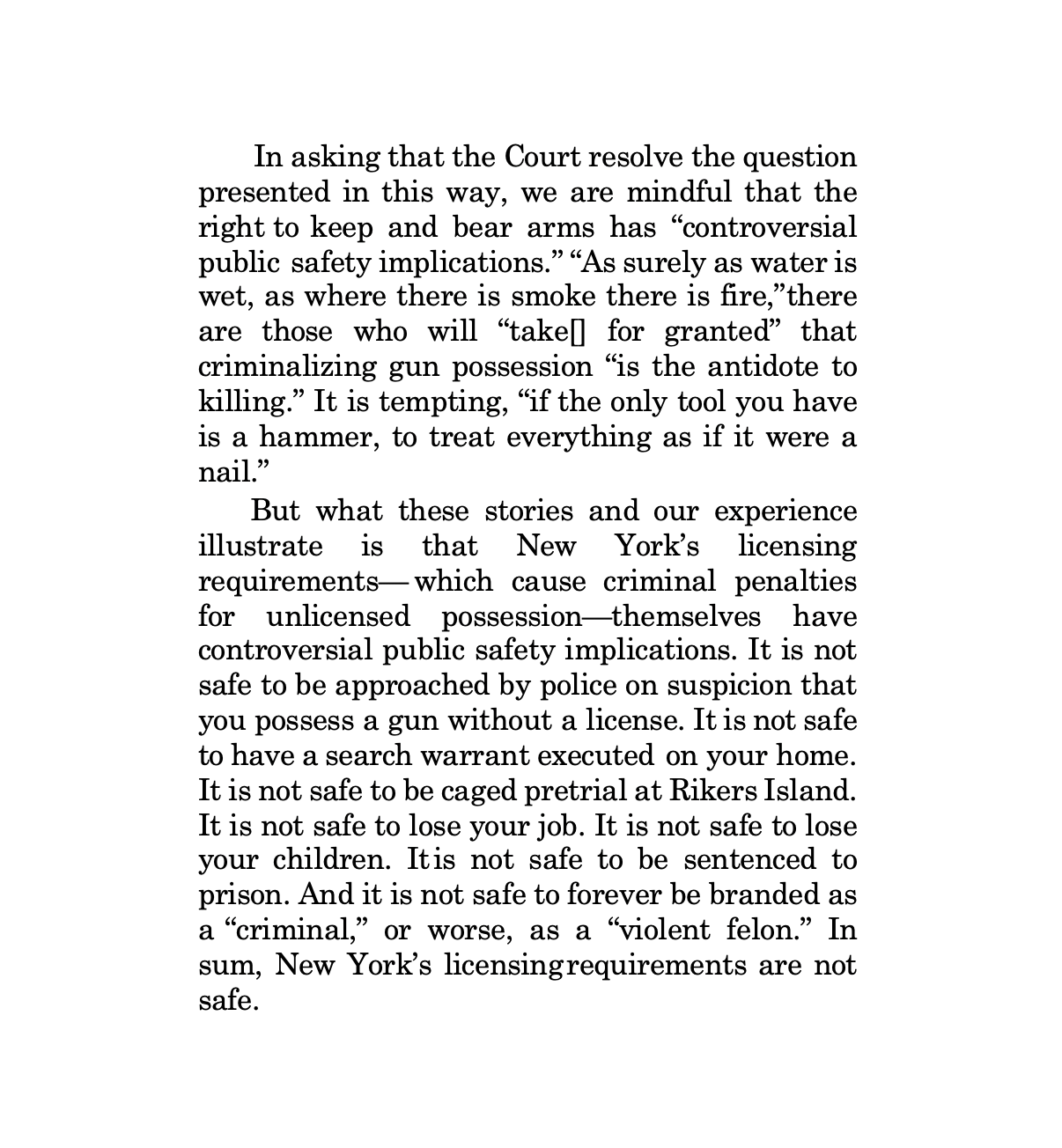
The way that this all interfaces with the Second Amendment is that the Second Amendment is a limitation on the government — “shall not be infringed.” Like other constitutional rights, it restrains the government’s ability to bring these horrible forces to bear on an individual person. We think a good way to deal with public safety is to do a bunch of things that don’t involve bringing the full weight of the government to bear on somebody, simply because they possessed a firearm.
With respect to the legal arguments, under whatever level of scrutiny you use, what is happening in New York cannot possibly be consistent with a constitutional right. There are no other constitutional rights for which the government gets to decide, in its own discretion, whether you get to exercise it at all. Even rights that might create challenges or even cause harm, like free speech.
But for some reason with the Second Amendment, New York has total discretion over whether you can possess a firearm at all, anywhere. And all of the problems one would expect with that kind of discretion, in fact, exist. In New York City, the New York Police Department is the institution that decides whether or not you can lawfully possess a firearm. So, the decision of whether or not you have a constitutional right is left to the unfettered discretion of an incredibly biased police organization. That seems problematic, to say the least. Unsurprisingly, the result of this structure is that a bunch of people on Staten Island—where a lot of police officers live—have firearm licenses and few other people do. Police officers are able to easily get a firearm license after they retire. And in fact, as a matter of course, they get something called a “good guy letter” so that they can breeze through the application process with pre-approval of being what they call a “good guy.” None of this can possibly be consistent with a constitutional right generally held by everyone.
There are other problems. You have to pay fees in order to get this license. And you have to subject yourself to the government’s eyes. For so many people in New York City, the government is constantly preying on them. Imagine: the local police precinct’s officers are stopping and harassing you, and frisking you, and all of your friends and your family, every single day of your life. And then, in order to exercise a constitutional right, you have to go to those same officers voluntarily and give them not only your physical presence, but also very sensitive and private information about who you are, where you live and work, and the names of people with whom you associate. This is a totally prohibitive barrier for a lot of people when they want to exercise a constitutional right. In other contexts, like the First Amendment, we would never stand for such a thing.
Michael: New York’s firearm licensing scheme originated in 1911 with the Sullivan law. That law, and so many others involving police control — including with the use of weapons — has roots in a desire to maintain control over Black people and other ethnic minorities. Today, if you’re in New York City and you’re a former police officer even if your daily work involved harassing and arresting Black and brown folks, you now also basically have the right to have a firearm after you retire. Whereas the people that you harassed and arrested for a very long time do not.
Avi: If you read some of the amicus briefs on the other side, you get the picture that there’s this world in which what the New York Police Department is actually doing is depriving racists of their firearms so they can’t intimidate racial minorities or Black Lives Matter protests. And they argue that is consistent with the way in which, at the time of Reconstruction, they claim some states tried to remove firearms from white supremacist groups. We’re seeing a real cross-section of NYPD’s arrests. We live everyday defending everyone and anyone facing prosecution for unlicensed firearm possession in New York City. And I don’t have any clients, nor have I ever heard of anyone ever having any clients, that were white supremacists whom the New York Police Department arrested for possessing a firearm without a license.
What’s actually happening is that the NYPD is marching around the city taking firearms from Black and brown people every single day. The police roam around the streets, throw Black and brown people against the wall at random, seize their guns, and then arrest them for the ‘violent felony’ of unlicensed gun possession. Everyone is very open about that.
Avinash samarth
What’s actually happening is that the NYPD is marching around the city taking firearms from Black and brown people every single day. The police roam around the streets, throw Black and brown people against the wall at random, seize their guns, and then arrest them for the “violent felony” of unlicensed gun possession. Everyone is very open about that. Former Mayor Michael Bloomberg has even literally admitted that the point of policing in New York City is to throw Black and brown people against the wall and take their guns away. That’s what’s really going on. So, in theory, I guess it is possible, hypothetically speaking, that you could have a government that goes around taking away all firearms from white supremacists. But that’s not what’s actually happening here. And I deeply question whether that has ever happened much anywhere in America. What’s actually happening in New York is that the government’s structure empowers the police and their families and friends to have firearms, while depriving everyone else of that same right.
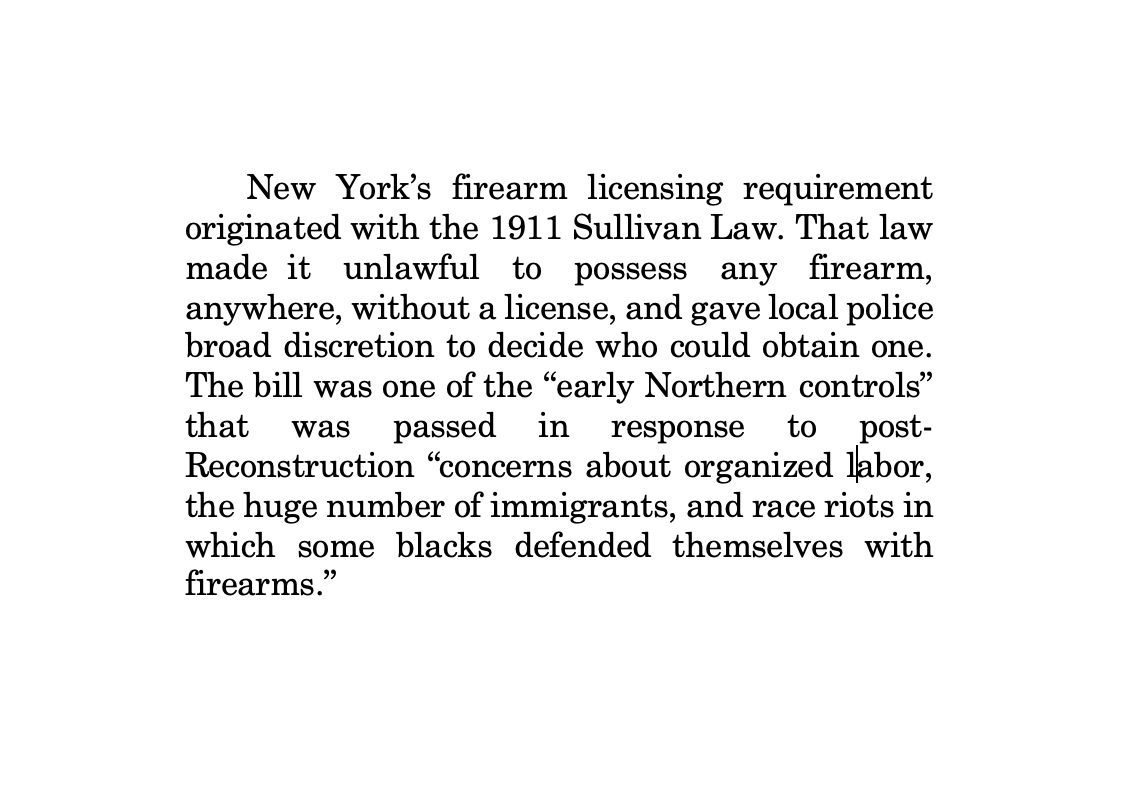
The other side — collectively, the respondents in the case, but also some of the amici in support of them — don’t acknowledge this. They say, “No, remember: There’s the South. And the South, they’re very racist. But we in the North, we are not racist. And our laws in the north were not about racism, they were about public safety. And actually, this guy, Sullivan, he wasn’t a racist at all, he was very progressive. And his law wasn’t about racism at all. He wanted to protect racial and ethnic minorities from violence. And is why they passed the Sullivan Law: to protect racial and ethnic minorities from violence.”
Baked within this reasoning is this idea that when you invoke “public safety,” you’re not talking about racism. But you are. That invocation of public safety was at the crux of stop-and-frisk and at the crux of mass incarceration. They didn’t only say, “Let’s arrest Black and brown people because I hate them.” They said, as Michael Bloomberg explicitly articulated, that Black and brown people are committing all the crime and they’re the victims of all the crime; therefore, we have to specifically and aggressively police and prosecute Black and brown people. If you look at all of the criminal-legal system policies that are now considered to be racist, many were justified on this basis. Some with good intentions, others not. So this idea that what we’re really trying to do is protect Black and brown people from other Black and brown people, that’s just a liberal spin on racism. It’s the same thing that Joe Biden used to do in the 1980s and 1990s. And it’s the same thing that Bill Clinton used to do. It’s the same thing that Michael Bloomberg did. It’s the same thing that Rudy Giuliani did.
We now understand in 2021 that the war on drugs, mass incarceration, stop-and-frisk was all racist, but it was racism packaged as public safety. A lot of liberals are quick to point that out now. But then, there’s this weird break, where they just fall into the exact same logic today to justify this other set of laws regarding firearms. They argue that if you don’t make unlicensed gun possession unlawful, then you’re not protecting Black and brown people because Black and brown people are more often the victims of guns. And so they support this disparate world where regular Black and brown people in the Bronx don’t have the same rights as, say, retired cops in Staten Island. They rely on the exact same logic that people did in the 1980s and in the 1990s when aggravating sentences for crack possession or when justifying stop-and-frisk or other increased and aggressive police activity in public housing developments. And that’s exactly how we got mass incarceration. I think a lot of the respondent amicus briefs really didn’t deal with that history or even acknowledge it. It’s not just a problem of discriminatory enforcement. Controlling Black and brown people is the raison d’être of these systems, including New York’s gun licensing regime and the criminalization of unlicensed gun possession. “Public safety” and racism are not these separate things; the idea of who is dangerous, of who needs to be policed, is itself a part of racism in America. That is the lesson of mass incarceration.
Michael: I think part of the pushback we have received has to do with the fact that incarceration has been a knee-jerk response to social problems for as long as any of us can remember. It makes it very difficult for us all to imagine a world without incarceration being the solution to everything. The pushback is also a reminder that in some ways, the more things change, the more they stay the same. When we talk about reforming the criminal punishment system, a lot of the reforms we see are simply a change in language. It gives the illusion that that we’re moving forward because the language has changed without recognizing that the harmful impact is still there. Not to say that nothing has changed. But what we are trying to do here with this brief is to truly move the ball forward, not just in name.
Image: Unsplash
